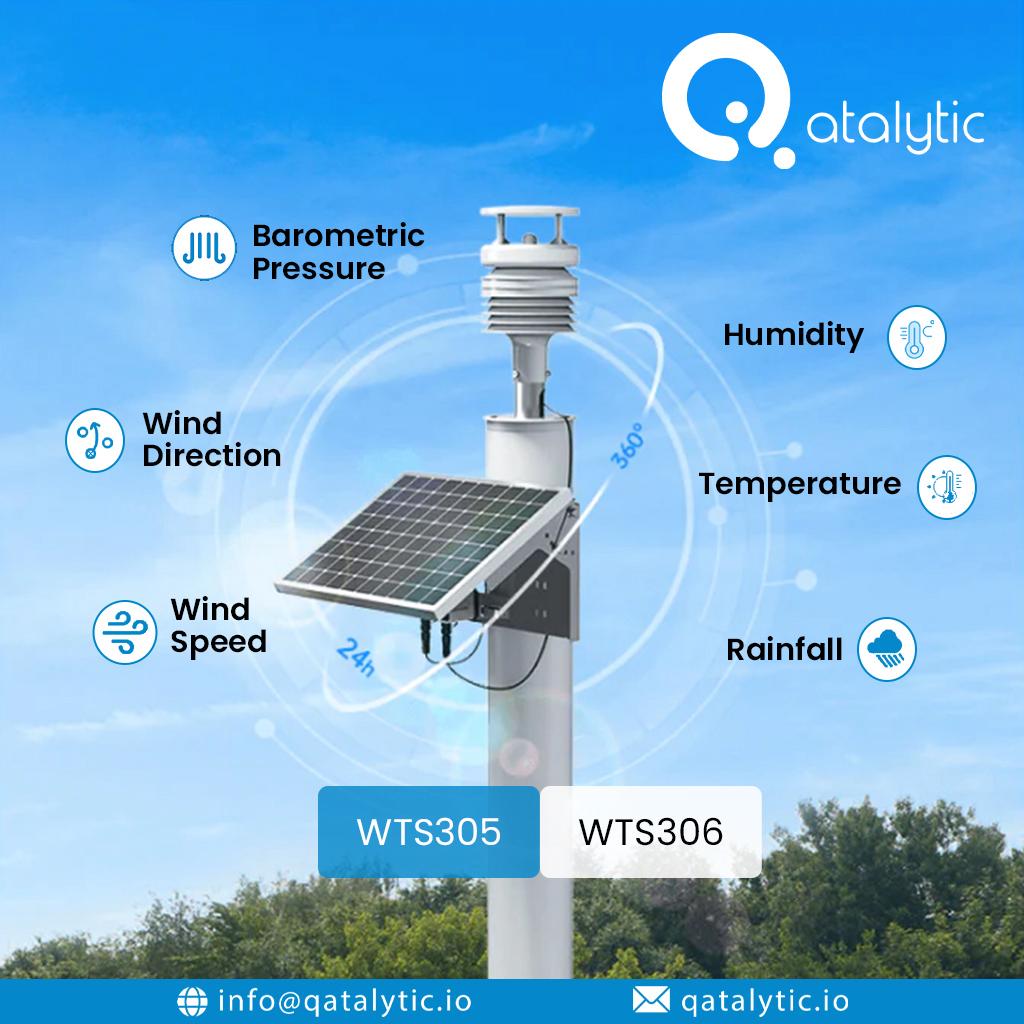Case Studies
At Qatalytic, we think that disruptive solutions and innovative ideas can move businesses forward. Our case studies highlight the many issues our clients saw and the customized solutions we created to help their succeed. Explore our portfolio to see how Qatalytic's expertise has impacted a variety of industries.
Weather Stations

Overview
Automatic Weather Stations (AWS) go beyond being just instruments for weather followers. They serve as the foundation for important functions in all sizes of companies. But what exactly characterizes an AWS? How do they function? Dive into this guide to learn the fundamentals of AWS technology.

What Is The Definition Of An Automatic Weather Station?

At its core, a weather station is a set of integrated components that measure, record, and frequently transmit weather data. Enter the automated weather station, an enhanced version of the standard setup. These stations, whether freestanding or part of larger networks, set the global standard for climate and boundary-layer meteorology.
Their primary reporting is on surface weather data, which include important metrics such as temperature, wind speed, direction, precipitation, humidity, solar radiation, air pressure, and visibility. While these are the most typical metrics, the station's components may provide additional data, such as cloud height.
How does an automatic weather station work?
Now that we've covered the basics of an autonomous weather station, let's look at how it works.
At its most basic, an AWS operates by sensing atmospheric conditions and transmitting that information to a network, forecaster, or display.
To do this, specialized devices are used to record the surface weather measurements indicated earlier. Thermometers measure temperature, whereas barometers measure air pressure. The accompanying weather sensor section goes into greater depth about each component and its functionality.
Automatic weather stations are made up of a number of components that work together to measure and transmit various types of atmospheric data. Typical equipment includes the following:👇👇
➡️ Weather sensors
➡️ Lightning sensors
➡️ Sensor shelters
➡️ Rain gauges
➡️ Data loggers/network appliances.
➡️ Weather Display
➡️ Weather Camera

👉 Weather Sensor: The weather sensor, while seeming broad, is primarily concerned with capturing wind speed and direction. This arrangement includes an anemometer, which measures wind speed, and a wind vane, which indicates wind direction. Using a vane-style anemometer integrates both functions, which is critical for understanding weather system movements and their impending arrival at specific sites.
👉 Lightning Sensor: The lightning sensor, while optional in some configurations, is an important safety tool. It detects total lightning, including both in-cloud and cloud-to-ground strikes, which is critical in determining storm severity. These cylinder-shaped sensors, which are equipped with a circuit board and are part of a larger lightning network, give efficient and accurate alerts that help determine storm strength and issue life-saving warnings.
👉 Sensor Shelter: Often ignored but loaded with significance, the sensor shelter stores a plethora of devices. It houses a diverse range of equipment, including thermometers for measuring temperature, hygrometers for monitoring humidity, and barometers for measuring atmospheric pressure. This shelter serves as a hub for measuring several indices such as heat index, wind chill, and wet bulb globe temperature, which are all important in assessing environmental conditions.
👉 Rain Gauge: The rain gauge, an easily understood component, measures liquid-equivalent precipitation. Its capabilities include the ability to detail rainfall or snowfall over certain time periods, providing insights into daily, monthly, and yearly precipitation averages and totals.
👉 Data Logger/Network Appliance: Data loggers and network equipment work together in automatic weather stations to automate a process. They collect, process, and store sensor data before sending it to weather displays, apps, and alarm systems. Extended battery life in these products enables continuous data availability, even during power outages.
👉 Weather Display: The weather display is a common element that ranges from personal stations with simple digital displays to professional-grade systems linked to high-definition screens. These detailed displays highlight current conditions and weekly forecasts, but online weather centers provide more accessibility by combining real-time observations, forecasts, live video feeds, and historical data.
Result
Qatalytic's cutting-edge surveillance system continues to get praises, and our most recent project demonstrates its greatness. The Residential Management Authority expressed great delight, saying, "I am glad that we could install highly reliable IoT products for this area, ensuring everyone in this residence can live peacefully


